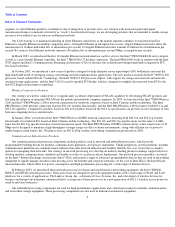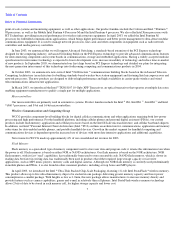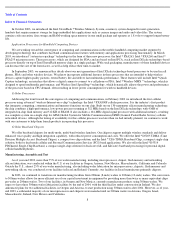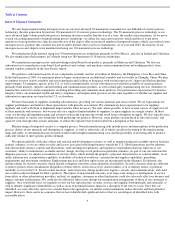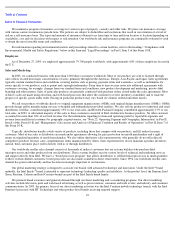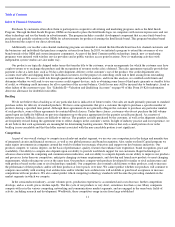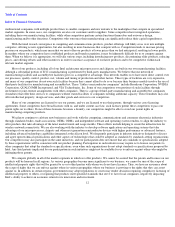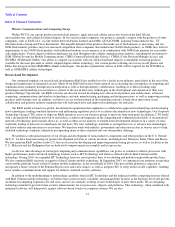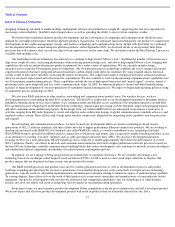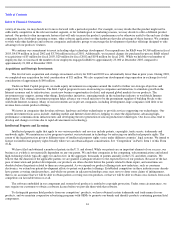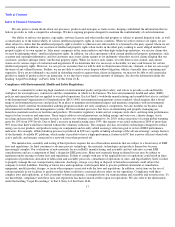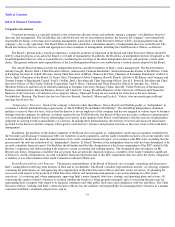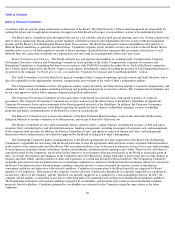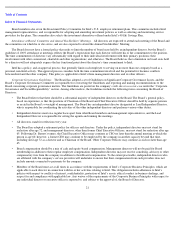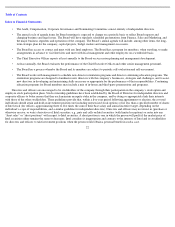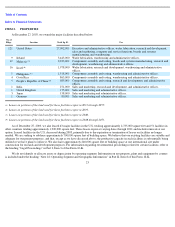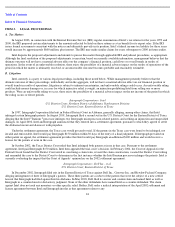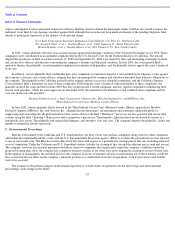Intel 2003 Annual Report Download - page 19
Download and view the complete annual report
Please find page 19 of the 2003 Intel annual report below. You can navigate through the pages in the report by either clicking on the pages listed below, or by using the keyword search tool below to find specific information within the annual report.
Table of Contents
Index to Financial Statements
variety of reasons, we may decide not to move forward with a particular product. For example, we may decide that the product might not be
sufficiently competitive in the relevant market segment, or for technological or marketing reasons, we may decide to offer a different product
instead. Our products often incorporate features that will only increase the product’
s performance or be otherwise useful to the end user if other
companies have developed operating systems, other software applications or other hardware that take advantage of these features. We continue
to work with other hardware and software companies and industry groups to encourage the development of product offerings designed to take
advantage of our products’ features.
We continue our commitment to invest in leading-
edge technology development. Our expenditures for R&D were $4,360 million in fiscal
2003, $4,034 million in fiscal 2002 and $3,796 million in fiscal 2001. Additionally, we incurred charges for purchased in-process R&D related
to acquisitions of $5 million for fiscal 2003, $20 million for fiscal 2002 and $198 million for fiscal 2001. While we held the total number of
employees flat, we increased the number of our employees engaged in R&D to approximately 23,000 at December 2003 compared to
approximately 21,000 at December 2002.
Acquisitions and Strategic Investments
The level of new acquisition and strategic investment activity for 2003 and 2002 was substantially lower than in prior years. During 2003,
we completed one acquisition for total consideration of $21 million. We also acquired one development-stage operation in exchange for total
consideration of approximately $40 million.
Under our Intel Capital program, we make equity investments in companies around the world to further our strategic objectives and
support our key business initiatives. The Intel Capital program focuses on investing in companies and initiatives to stimulate growth in the
Internet economy and its infrastructure, create new business opportunities for Intel, and expand global markets for our products. The
investments may support, among other things, Intel product initiatives, emerging trends in the technology industry or worldwide Internet
deployment. This strategic investment program helps advance our overall mission to be the preeminent supplier of building blocks to the
worldwide Internet economy. Many of our investments are in private companies, including development-stage companies with little or no
revenue from current product offerings.
We invest in companies that develop software, hardware and other technologies or provide services supporting our technologies. Our
current investment focus areas include: enabling mobile and Internet client devices, helping to create the digital home, advancing high-
performance communications infrastructures and developing the next generation of silicon production technologies. Our focus areas tend to
develop and change over time due to rapid advancements in technology.
Intellectual Property and Licensing
Intellectual property rights that apply to our various products and services include patents, copyrights, trade secrets, trademarks and
maskwork rights. We maintain an active program to protect our investment in technology by enforcing our intellectual property rights. The
extent of the legal protection given to different types of intellectual property rights varies under different countries’
legal systems. We intend to
license our intellectual property rights broadly where we can obtain adequate consideration. See “Competition” in Part I, Item 1 of this Form
10-K.
We have filed and obtained a number of patents in the U.S. and abroad. While our patents are an important element of our success, our
business as a whole is not materially dependent on any one patent. We and other companies in the computing, telecommunications and related
high-technology fields typically apply for and receive, in the aggregate, thousands of patents annually in the U.S. and other countries. We
believe that the duration of the applicable patents we are granted is adequate relative to the expected lives of our products. Because of the fast
pace of innovation and product development, our products are often obsolete before the patents related to them expire, and sometimes are
obsolete before the patents related to them are even granted. As we expand our product offerings into new industries, such as consumer
electronics, we extend our patent development efforts to patent such product offerings. Established competitors in these industries may already
have patents covering similar products, and while our patents in adjacent technology areas may serve to deter some claims of infringement,
there is no assurance that we will be able to obtain patents covering our own products, or that we will be able to obtain cross licenses from such
competitors on favorable terms or at all.
The software embedded in our component and system-level products is entitled to copyright protection. Under some circumstances, we
may require our customers to obtain a software license before we provide them with that software.
To distinguish genuine Intel products from our competitors’ products, we have obtained certain trademarks and trade names for our
products, and we maintain cooperative advertising programs with OEMs to promote our brands and identify products containing genuine Intel
components.
16


